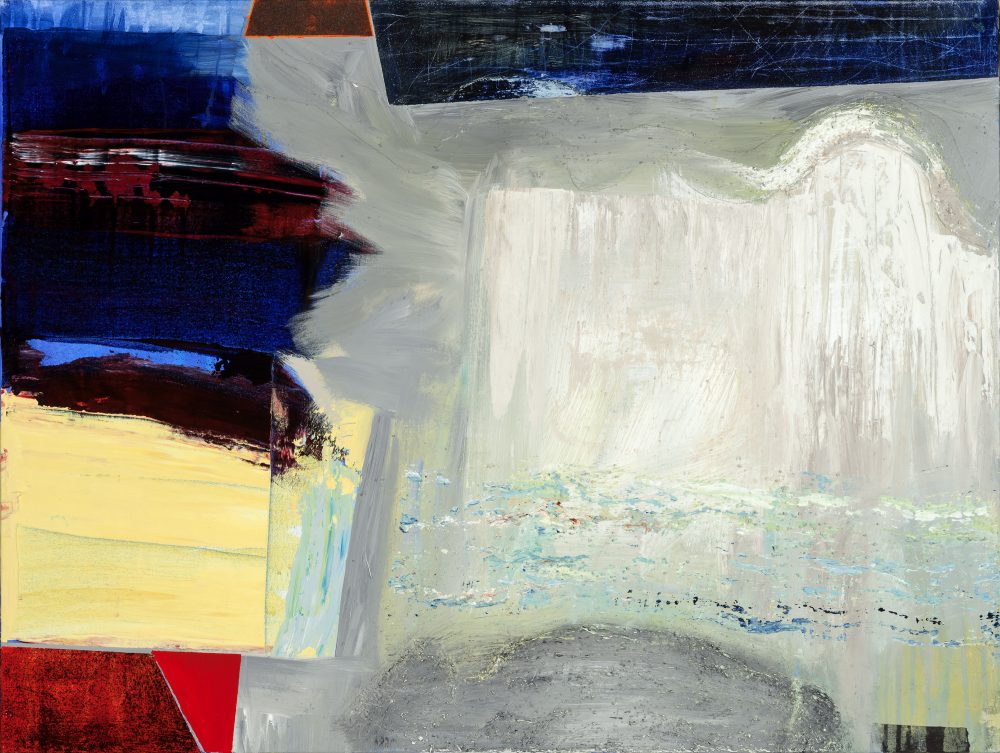Exhibition Pick: Kathleen Ariatti Banton
Taylor Murrow visits an exhibition of works by Kathleen Ariatti Banton, who takes inspiration from the topography of New Orleans.

Kathleen Ariatti Banton, I heard they shut down the Causeway over the lake during that heavy rainstorm, 2016. Acrylic on canvas. Courtesy the artist and Jonathan Ferrara Gallery, New Orleans.
Kathleen Ariatti Banton
Jonathan Ferrara Gallery
400A Julia Street
February 20 - March 26, 2016
Here in New Orleans, we all exist on land between the Mississippi River and Lake Pontchartrain, two powerful, mystic, liquid bodies that define our boundaries, expose our vulnerabilities, and give life to our communities. Kathleen Ariatti Banton is a New Orleans native, who, like so many others, found herself displaced after Hurricane Katrina and finally moved back to the city about a year and a half ago. Her latest body of work, primarily paintings, now on view at Jonathan Ferrara Gallery, references the geography of the city and her personal recollections of it. Memory is similar to water in its slippery nature and its tendency to ebb and flow.
Banton covers her canvases in thick, gestural brushstrokes in a vibrant palette of colors. Acrylic paint appears to have been pushed and scraped over other layers, recalling Gerhard Richter’s squeegee abstractions. Sometimes she adds additional texture by incorporating strips of canvas and a gritty medium to the surface. The artist’s shapes make visible the distinctive curves of the Mississippi River and our city’s patchwork grid of streets, but because Banton’s paintings are abstract, their long, conversational titles play a considerable role in their meanings. In When you reach the middle of the Causeway Bridge, you cannot see the north or south shores of Lake Pontchartrain, deep blues and muted greens echo the vast expanse of that brackish lake, while dusty greys and shades of concrete recall the long, 24-mile stretch of bridge that connects the two shores.
A few of Banton’s aluminum sculptures are on view as well. In one pair that shares the title of the show, Between the River and the Lake, Banton reduces these powerful waterways to two flattened, shiny objects. Though larger, the effect is not unlike modern trinkets you might find hanging from a delicate chain in a local jewelry shop. Seeing them isolated on the wall, so plain and bare, it’s almost surprising that so much art, literature, life, and destruction could spring from these two deceptively simple forms.



